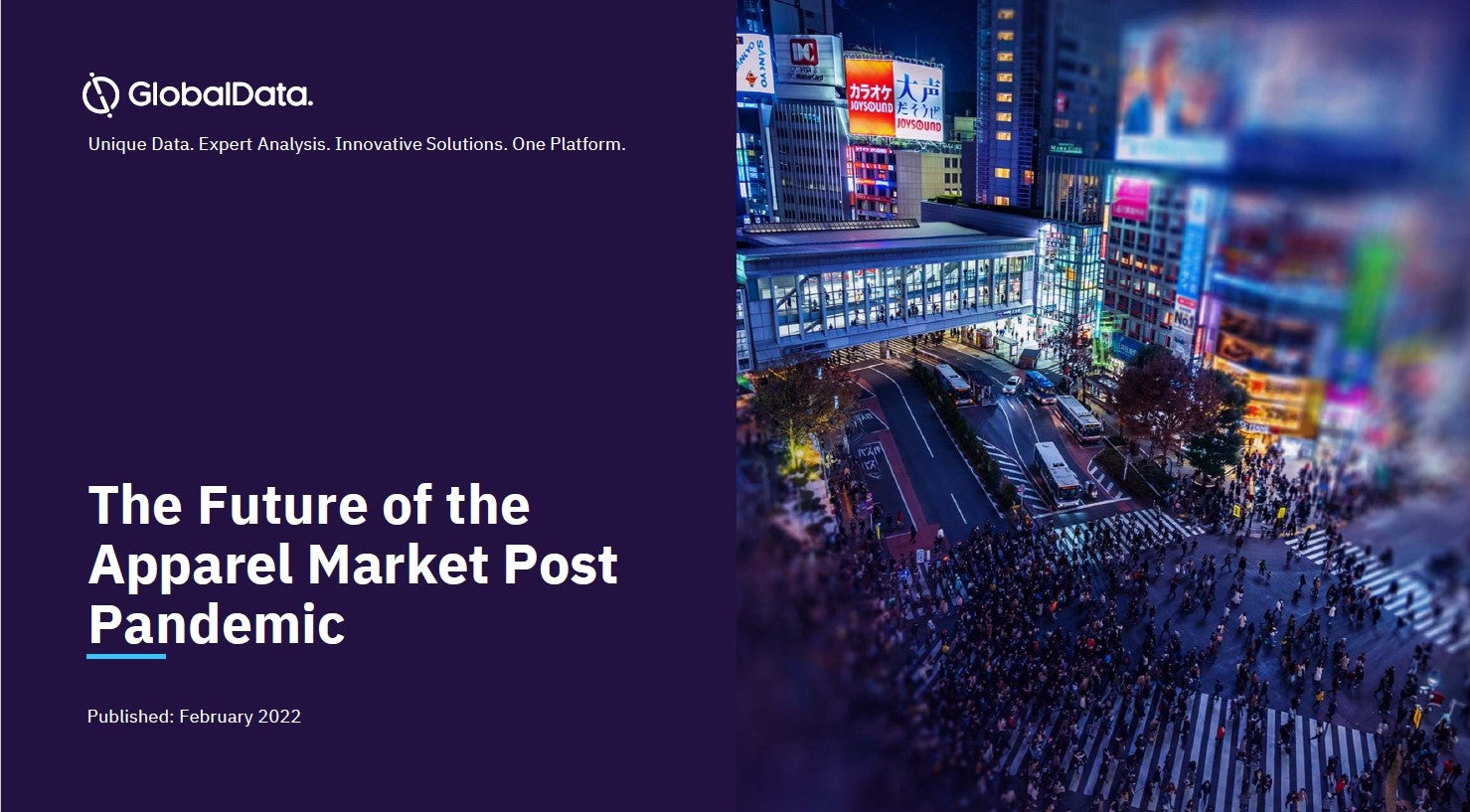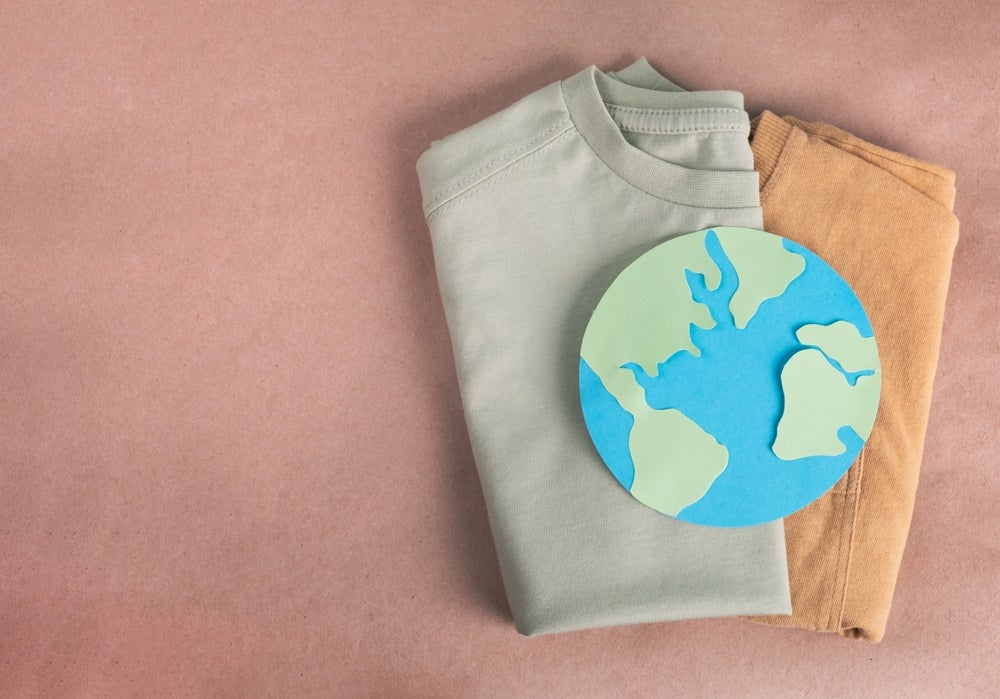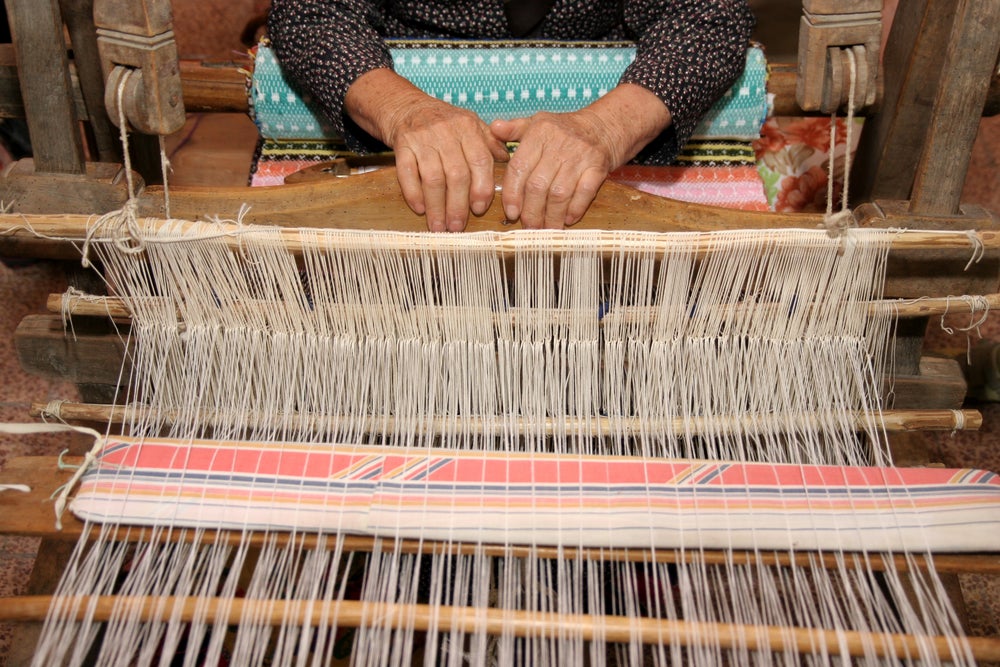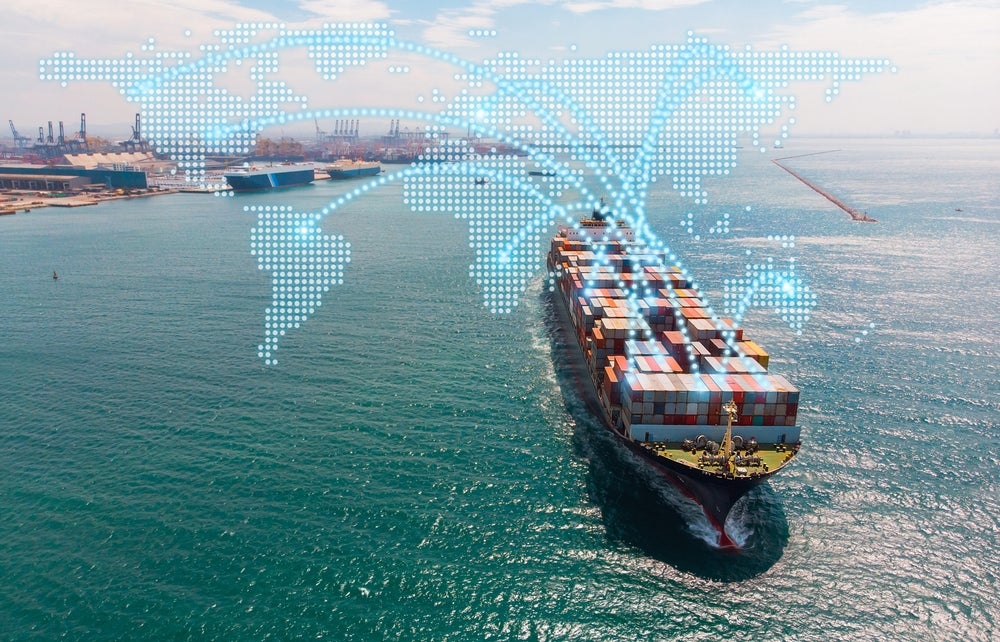
It won’t come as any surprise that uncertainty, complexity and volatility in the global economy, US-China trade and Brexit, along with rapidly changing consumption patterns, are pushing the global apparel industry and its supply chain into unchartered territory in the year ahead. But according to feedback from a panel of executives consulted by just-style, disruptions also present huge opportunities for retailers and brands to rethink their business models and explore new ways of working – especially when it comes to using new technologies and data.
Marc Compagnon, executive director & group president, Li & Fung:
The unpredictable geopolitical environment will be a major challenge facing our industry in 2019. The US-China trade war is on a lot of retailers’ minds and has taken a few turns now, with costs starting to rise. Apparel companies must act fast and diversify production strategies to position themselves to absorb any shock from possible trade conflicts. With a global network of 15,000 suppliers in over 40 markets, Li & Fung is well positioned to help our customers diversify their sourcing portfolios to offset any impact from the trade war.
Trade aside, another challenge facing the apparel industry is keeping up with the pace of change with consumers. I think in 2019 we’ll continue to see the retail sector pushed to the limits in keeping ahead of new technologies, the online effect, pressures from fast fashion retailers, increased complexities in the omnichannel world, and the growth of data. But these disruptions present huge opportunities for retailers and brands to rethink their business models and explore new ways of working, and engaging with their consumers.
Rick Helfenbein, president & CEO, American Apparel & Footwear Association (AAFA):
After ten tumultuous years, most of the retail and apparel/footwear sectors had finally seen the light of day by early 2018. The industry survived a string of bankruptcies, adjusted excess retail space, learned how to sell online, and welcomed the millennial shopper with open arms.
Just as relief was settling in, the next retail tsunami was unleashed by President Trump’s tariff war with China. This single disruptive tariff action has put much of our industry in a tailspin. We now reside in uncharted supply chain territory given 41% of US apparel and 72% of US footwear originate in China. The mere threat of import tariffs – even more than the actual implementation – has left our industry in a difficult position.
How well do you really know your competitors?
Access the most comprehensive Company Profiles on the market, powered by GlobalData. Save hours of research. Gain competitive edge.

Thank you!
Your download email will arrive shortly
Not ready to buy yet? Download a free sample
We are confident about the unique quality of our Company Profiles. However, we want you to make the most beneficial decision for your business, so we offer a free sample that you can download by submitting the below form
By GlobalDataSee Also:
Facing what can likely be characterised as the most disruptive dynamic sourcing shift in recent memory, apparel, footwear and accessory suppliers are vacating the comfort of their existing supply chains and venturing to countries somewhat untested and unknown to their confidence zone. The new cry from financial analysts to industry officials for 2019 is very clear: “What’s your China exposure?”
Edwin Keh, CEO of the Hong Kong Research Institute of Textiles and Apparel (HKRITA), and lecturer at the Wharton School at the University of Pennsylvania:
2019 will be full of uncertainties as we deal with country of origin challenges in the current trade uncertainties. While this will occupy lots of operational attention in the short term, there are also going to be long term challenges.
Now that we are coming up on 2020, all those promises the industry made about improving sustainability practices, transparency, and working conditions need to move from vague commitments to action and change. There are lots of companies who are woefully unprepared and, as result, risk losing credibility and consumer confidence.
As global consumption patterns shift from online to omni-channel, from developed Western countries to emerging Eastern economies (China and India), and from buying what is inexpensive (price) to buying what is valuable (innovative, meaningful, good), brands have to find deep and meaningful connections with their customers. They must also give them compelling reasons to consume, and finds ways to optimise their supply chains to create seamless, frictionless, customer centric user experiences. This will mean reshaping existing global supply chains, forging new alliances, and bringing on new talent and leadership.
Robert Antoshak, managing director, Olah Inc:
Many challenges are facing the global apparel industry – but that’s nothing new! However, in 2019 there are three significant challenges worth considering. First, how best to reach an evolving customer; second, how to maximise sustainability initiatives to meet business objectives; and third, how to adapt to a rapidly changing sourcing environment.
Let’s start with our customers. In many countries around the world, consumers are increasingly younger with less disposable income to spend on clothing than previous generations. Moreover, what financial resources these consumers do have may more likely be spent on the latest high-tech gadget than on the latest in denim or knitwear. Besides, many of these consumers are worried about how garments are made these days. And there are concerns over what happens to their clothes once they are discarded. As a result, supply chain transparency has become more important to more consumers.
Which brings me to sustainability. Although many consumers claim to support sustainable production in the apparel industry, many refuse to pay more for such initiatives simply because they can’t afford it, which leaves brands in a pickle. Who’s to pay? Sustainability comes with real costs that are either pushed upstream on suppliers or downstream to consumers, if not outright absorbed by brands (which is less likely). In any event, sustainable production remains essential to our industry and can be nurtured if it’s supported by sound business practices.
And then there’s the agony of today’s sourcing brought to you by the US government. The trade war between the US and China has forced so many companies in our industry to reconsider their sourcing options – and fast. I mean now. The smart hedge for many companies seems to be in diversification. Long-established supply chains in China are hard to maintain when 25% tariffs are added to the mix. So other countries – led by Vietnam – have directly benefited as sourcing has shifted away from China. Additionally, some supply chains have shortened, too, to include sources of production closer to consuming markets. It will be interesting to see if such new sourcing patterns remain in place should the tariff war between the US and China ends suddenly.
Dr Sheng Lu, associate professor at the Department of Fashion and Apparel Studies at the University of Delaware:
In my view, uncertainty will remain the single biggest challenge facing the apparel industry in 2019, ranging from a more volatile global economy, the unpredictable outlook of the US-China trade talks to the various possible Brexit scenarios. While uncertainty creates exciting new research opportunities for scholars like me, it could be a big headache for companies seeking a foreseeable market environment to guide their future business plan and investments.
Meanwhile, the increasing digitalisation of the apparel supply chain based on big-data tools and artificial intelligence (AI) technologies means a huge opportunity for fashion companies. Indeed, the apparel industry is quickly changing in nature – becoming ever more globalised, supply-chain based, technology-intensive and data-driven. Take talent recruitment as an example. In the 2018 US Fashion Industry Benchmarking Study, which I conducted in collaboration with the US Fashion Industry Association (USFIA), 68% of executives surveyed from leading US fashion brands and apparel retailers said they plan to hire more data scientists in the next five years. The advance of digital technologies and the smarter use of data should enable apparel companies to overcome market uncertainties better and improve many aspects of their businesses such as speed to market, operational efficiency and even sustainability.
Rajiv Sharma, group chief executive, Coats:
A key challenge is the increasing consumer pressure on sustainability, although every challenge also presents opportunity. Our industry can do more here: promoting a circular economy, products using less water during manufacturing, reducing the use of plastic, consuming less electricity etc – there is much more that can still be done.
The evergreen challenge remains responding to changing consumer trends. Where do they like to buy? What do they want to wear? How much do they want to pay for it? Despite the more uncertain economic outlook, consumers are still spending but the value proposition needs to be right. Brands and retailers that stay close to their consumers are best positioned to understand them, quickly identify subtle changes in behaviour or demands, and then respond accordingly.
Across Asia, particularly India and China, the middle class consumer base continues to grow. Those with a position in these markets will be well placed to take advantage of future opportunities.
Margin pressure across the industry continues to be high. This, coupled with mixed demand across geographies and segments, will create a push towards more creative solutions. The winners in 2019 will be those players that navigate through a market that is more uncertain, complex and volatile. Each player needs to find a solution that works for them. ‘One size fits all’ does not work in our industry.
Julia Hughes, president, United States Fashion Industry Association (USFIA):
The obvious answer: tariffs, trade wars, and the uncertainty resulting from 2018’s major upheavals in policy, politics, and global markets. The growing trade protectionism in the United States, as well as in Europe, will cause continued trade disruption in 2019, and for the foreseeable future.
Of course, we can’t deny the fact that intellectual property theft and other unfair trade practices in China are major challenges, too – especially for the fashion industry. We agree with the Trump Administration on the need to find solutions to these challenges. However, higher tariffs, an extended trade war with our largest trading partner, and heightened tensions with allies around the world won’t solve the problem; these tactics will only create more challenges for American businesses and consumers.
We’re also concerned about slavery and human trafficking in supply chains, cyber attacks affecting businesses and consumers, climate change (and the need for everyone to do their part to tackle it), and how companies can keep up with the constantly evolving retail landscape.
Still, there are opportunities. If we think creatively about this new political world, there’s a huge opportunity to engage with the Trump Administration as they work to negotiate new bilateral trade agreements, eliminate overly burdensome regulations on businesses, and create new jobs in the United States. Already, we’ve had some success. The US-Mexico-Canada Agreement, or the “New NAFTA,” contains several helpful provisions for the industry.
We also see exciting opportunities to challenge the high tariffs on US imports of consumer products like apparel and footwear. And on the retail front, companies can take advantage of the low unemployment and high wages to grow their businesses, if they innovate and rethink their supply chains, their products, and their stores to deliver what consumers really want right now.
More good news is that we’re seeing more and more that consumers, especially millennials and younger consumers, want to buy from sustainable, transparent brands – more evidence of the business case for working to tackle issues like human trafficking and climate change.
Matthijs Crietee, secretary general, International Apparel Federation (IAF):
The main challenge is to effectively put to use all of the digital technology that has become available to create stronger, smarter and more sustainable supply chains. A lot of waste, both figuratively and literally speaking, can still be taken out of the supply chain, but effective implementation of the technology requires involvement of the entire supply chain. This is complex, expensive and risky, therefore requiring strong leadership.
Another major challenge for the industry is to communicate its achievements, particularly in terms of sustainability, to start rebuilding trust. A number of industry initiatives are delivering, but consumers are still largely in the dark. Indicative of this problem is that the ‘apparel and textiles as the second most polluting industry’ myth is so pervasive.
Trust is also an issue within the supply chain, where real or perceived bad purchasing practices clash with the good intentions of brands or retailers’ CSR departments. The IAF, with a membership of most major industry associations in all continents, will take a larger role in 2019, bringing together in dialogue players from across the supply chain, buyers and manufacturers, large and small. Trust building is hard work, but it is what this industry needs very badly, both internally and externally.
Siobhán Géhin, Kurt Salmon, part of Accenture Strategy:
2019 will see another year of accelerating change – in fact, change has become the new norm. Customer expectations are higher than ever, driven by the digital revolution and a plethora of hyper-convenient offers and services available to customers. Consumers are in control, and they are driving the agenda for apparel retailers and manufacturers. Consumers increasingly want the latest trend, now and on their terms.
An ever-increasing number of new market entrants cater to micro-niches such as sustainable clothing, comfortable work garments for professional women, personalised tees etc. meaning loyalty to established brands is declining, and incumbent players are subject to the “attack of the minnows” –multiple small players nibbling at their market share.
On top of this, we will see some challenging market conditions in mature markets in 2019, with unpredictability in the UK and the US in particular. The uncertainty around global trade terms, given the potential impact of Brexit and the US/China trade war, will certainly have an impact on supply chains and costs, and potentially on consumer demand.
Dr Achim Berg, senior partner at McKinsey & Company and co-leader of McKinsey’s Apparel, Fashion & Luxury Group:
Volatility, uncertainty and shifts in the global economy continue to be the top challenges for global fashion executives. As key economic indicators begin trending downward, a number of other potentially destabilising reasons for caution lie ahead. In fact, 70% of the respondents to our BoF-McKinsey State of Fashion survey are concerned about the overall global macroeconomic outlook in 2019.
Online and omnichannel transformation continue to represent a major challenge for the fashion industry as well.
The challenge for 2019 that international fashion executives mentioned third most often is the speed at which consumer preferences are changing. In response, fashion companies are working to reduce lead times, increase flexibility, and improve their demand-forecasting capabilities. End-to-end digitisation and advanced analytics play an important role in these efforts.
Sustainability and transparency, long treated as the subjects of box-ticking exercises, are evolving into transformational features. In this year’s survey, these topics were among the top four challenges mentioned by global industry executives for the first time.
Rick Horwitch, vice president and global retail lead for supply chain strategy at Bureau Veritas Consumer Products Services:
The biggest challenges – speed, digitization, trust and transparency – are also the biggest opportunities. The traditional Economics 101 model of Supply and Demand, is being replaced with Economics 101.v2 – Demand and Supply. Consumers have more choices than ever before. There are more opportunities than at any time in history for retailers, brands and manufacturers to collaborate with each other and directly with the consumer. The key is to create a collaborative value equation that addresses the entire product cycle (concept to consumer). We are living through an amazing retail renaissance.
To meet this opportunity, long-standing business models, processes and thinking are changing. The continuing push for speed, reduced inventories and margin pressure can have a negative impact on the entire process. Companies are harnessing the power of data for all aspects of the value chain. Data with purpose – advanced analytics, predictive analytics and artificial intelligence – is key to meeting these opportunities in a proactive manner.
Equally important in a highly connected world where information is instantaneous, is that NOT meeting the customer’s expectations could have an immediate, and disastrous, effect. Creating trust and transparency along the entire chain can no longer be buzzwords.
Today’s winners have found a way to develop and integrate innovative, collaborative, processes and analytics (a value chain approach) that are improving speed and margin, without sacrificing quality, to meet the trust and transparency needs of the consumer.
Mike Flanagan, CEO of apparel industry consultancy Clothesource:
The industry’s biggest problem is a crisis among the Western clothing retailers on whom hundreds of thousands of suppliers worldwide depend – as well as tens of millions of textile and garment workers in developing countries.
There’s a belief that this is about poor sales. And it’s intertwined with beliefs that online retailing is more efficient than physical; that clothes retailing is bound to move online; and that retailers who don’t understand this will price themselves out of business – if they’ve not already alienated all the millennials who are their natural customers.
My Emperors’ Clothes survey exposed all this months ago. Clothing retailers have their problems: but they’re mostly about costs, not sales. They’re targeting the young, when the middle-aged are clothing’s big spenders. They’re concerned with fashion, when their customers want style. They’re inadequately focused on consumer needs; absurdly deferential to the fads of outside consultants; spendthrift in IT, new branches and, above all, in what they pay their shareholders and senior management. And with no doubt remaining that selling clothes online reduces profits, it is now only a matter of time before the online retail bubble bursts.
But there’s also a lengthening list of other misguided beliefs about our industry:
1: “In 2018, British retail saw its worst November in living memory.” In fact, November 2018 saw higher UK retail sales than any November ever – and year-on-year growth was the fourth highest in the previous 30 years.
2: “Our industry has a spectacularly catastrophic impact on the world’s pollution problems.” The apparel and textile industry is just not big enough to do anything like the amount of damage its detractors claim: summarised in the phrase “the world’s second biggest polluter.” Yet, as the New York Times finally admitted in late December, the allegation is almost foundless. Yes, there’s a lot it is doing wrong – but our industry can’t solve the problems alone.
3: “Workers are being ruthlessly exploited.” Scarcely a day goes by without complaints of awful wages in developing countries – and even in the onshore garment industry. But the ILO’s 2018/19 Global Wage Report showed that between 2008 and 2017, real wages in Bangladesh (actual average wages deflated by CPI) increased 34%. That means workers in factories making garments for export. The ILO report shows almost all emerging economies saw substantial real wages growth over those ten years. It’s likely garment wages did too. Claims that “minimum wages have grown by only x%” are not the same as cash wages not growing.
4: “Innovation needs taxpayer subsidy to survive.” By the end of 2018, governments had begun to attack the lavish exemptions from laws and taxes they had given internet retailers: the US Congress agreed to impose sales tax on out-of-State retail, while the UK began to show signs of similar sense on business rates; Canada announced its intention to withdraw uneconomic postal subsidies to Chinese businesses selling direct into the Canadian market; Donald Trump signalled similar plans; and India began discussing curbs on internet retailing amid fears about below-cost selling by its minuscule online retail industry. On this issue – if on few others – the developed world may well start watching India for advice.
5: “Robotics will destroy jobs.” Robotics have a limited future in garment making. Businesses like Esquel are making huge strides in automation, but they’re still employing as many as years ago. Drones have almost no role delivering stuff to people’s houses: they’ll get regulated like cars and might have a future in getting blood to hospitals, but they’ll never deliver a T-shirt.
6: “Shareholders will keep letting Big Tech hurl money away.” Amazon‘s 2017 losses on European retail were greater than the 2017 losses that drove Sears into bankruptcy. Investors aren’t about to lose patience with the likes of Amazon – they’ve lost it already: in the last three months of 2018 alone, the paper value of Amazon fell over 30%.
Against all this, there are huge opportunities. Clothing sales keep growing, our customers are getting better off as they live – and stay style-conscious – for longer. Their growing diversity in tastes, body shapes, age, aspirations and priorities offer clothing designers and retailers huge opportunities for making money ethically and sustainably.
See also:
- Outlook 2019 – Apparel sourcing trends and strategies
- Outlook 2019 – Top apparel supply chain tactics in the year ahead
- Outlook 2019 – What else can the apparel industry expect?








